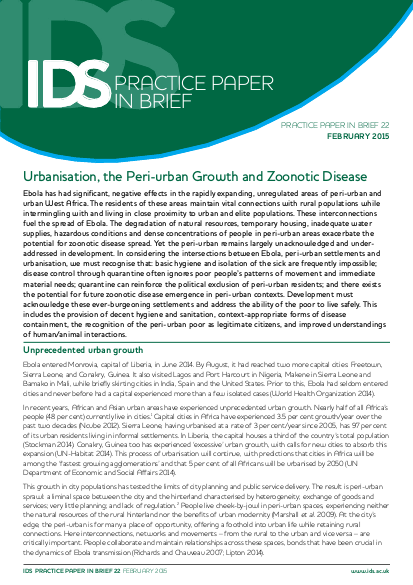
Ebola has had significant, negative effects in the rapidly expanding, unregulated areas of peri-urban and urban West Africa. The residents of these areas maintain vital connections with rural populations while intermingling with and living in close proximity to urban and elite populations.
These interconnections fuel the spread of Ebola. The degradation of natural resources, temporary housing, inadequate water supplies, hazardous conditions and dense concentrations of people in peri-urban areas exacerbate the potential for zoonotic disease spread. Yet the peri-urban remains largely unacknowledged and under-addressed in development.
In considering the intersections between Ebola, peri-urban settlements and urbanisation, we must recognise that: basic hygiene and isolation of the sick are frequently impossible; disease control through quarantine often ignores poor people’s patterns of movement and immediate material needs; quarantine can reinforce the political exclusion of peri-urban residents; and there exists the potential for future zoonotic disease emergence in peri-urban contexts.
Development must acknowledge these ever-burgeoning settlements and address the ability of the poor to live safely. This includes the provision of decent hygiene and sanitation, context-appropriate forms of disease containment, the recognition of the peri-urban poor as legitimate citizens, and improved understandings of human/animal interactions.
Links
Resource collections
- COVID-19 Response Collection
- Learning from crises
- UN Habitat - Urban Response Collection
- Urban Response - Urban Crisis Preparedness and Risk Reduction
- Urban Response Collection - Community Engagement and Social Cohesion
- Urban Response Collection - Economic Recovery
- Urban Response Collection - Environment and Climate Change
- Urban Response Collection - Housing, Land and Property
- Urban Response Collection - Urban Crisis Response, Recovery and Reconstruction
- Urban Response Collection - Urban Resilience